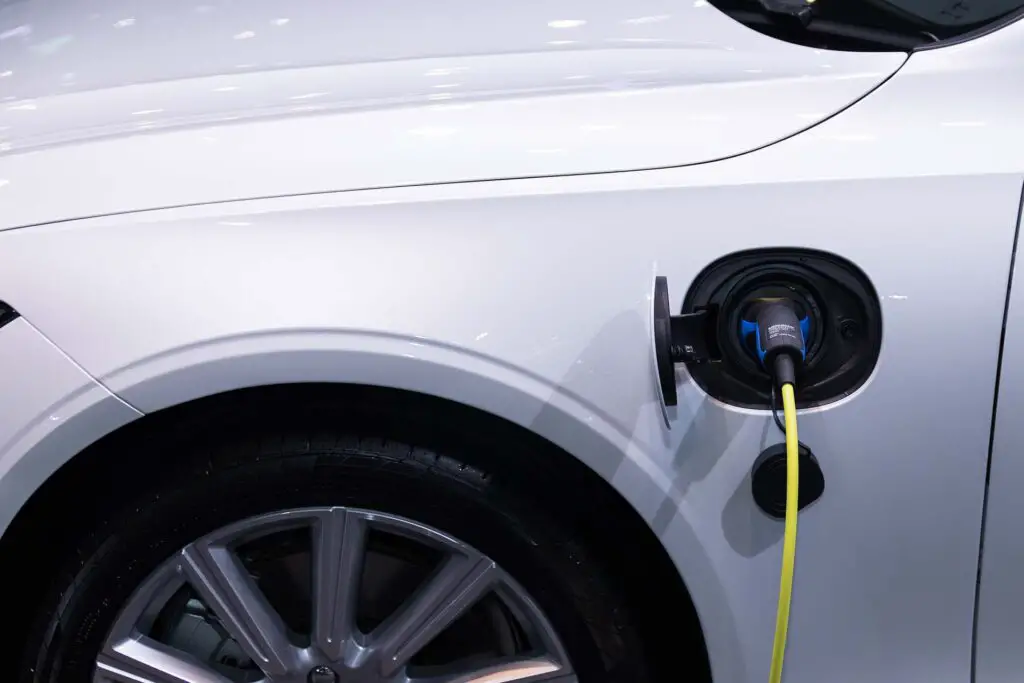Picture a world where sleek eco-friendly vehicles silently glide through the streets, revolutionizing transportation while reducing carbon emissions. As the electric car movement gains momentum, one question looms large: how often do electric cars need new batteries? Buckle up and prepare to unveil the secrets behind the powerhouses propelling us into a greener future.
The lifespan of electric vehicle (EV) batteries can vary, but they can typically last between 100,000 to 200,000 miles or about 15 to 20 years. However, it’s important to count on the advancements in battery technology and that they continuously improve longevity, reducing the frequency of battery replacements.
What Are Electric Car Batteries?
These components are also known as traction batteries or lithium-ion batteries. They are the energy storage units that power EVs. Unlike traditional internal combustion engines that rely on fossil fuels, electric cars utilize these advanced rechargeable batteries to store and deliver electricity to propel the vehicle.
Typically composed of multiple interconnected cells, these batteries harness the power of lithium-ion technology to provide the necessary energy for driving the vehicle’s electric motor. By converting electrical energy into mechanical energy, electric car batteries offer a cleaner and more sustainable alternative to conventional gasoline-powered vehicles, significantly reducing greenhouse gas emissions.
What Types of Batteries Are Used in Electric Cars?
The most common type of batteries used in EVs are lithium-ion batteries. These components have become the industry standard due to their high energy density, efficiency, and relatively lightweight construction. Lithium-ion batteries consist of multiple cells connected in series or parallel configurations to achieve the desired voltage and capacity.
Within the category of lithium-ion batteries, different chemistries are employed, including lithium nickel manganese cobalt oxide (NMC), lithium iron phosphate (LiFePO4 or LFP), and lithium cobalt oxide (LCO). Each chemistry has its own advantages and considerations in terms of energy density, cost, safety, and longevity. To get a better picture, here’s a table of some key pros and cons each type of battery has.
| Type of Battery | Pros | Cons |
| lithium nickel manganese cobalt oxide (NMC) | Good balance of energy density and cost | Moderate thermal stability |
| Lithium Iron Phosphate (LiFePO4 or LFP) | Long cycle life | Lower specific power output |
| Lithium Cobalt Oxide (LCO) | High energy density | Potential for thermal runaway |
Overall, lithium-ion batteries dominate the electric vehicle market, continuously evolving with advancements in technology to provide improved performance, longer ranges, and enhanced durability.

Are There Any Innovations That Could Improve the Battery?
In recent news, the Argonne National Laboratory, part of the US Department of Energy, has made significant strides in battery technology by creating a revolutionary lithium-air battery. This groundbreaking innovation holds the potential to revolutionize the EV industry by greatly extending the range of EVs. Here are what you need to know:
- With the ability to potentially replace current lithium-ion (Li-ion) batteries, this novel design has the capacity to power a wide range of vehicles, from cars and domestic airplanes to long-haul trucks. The future of sustainable transportation is being redefined as researchers continue to push the boundaries of battery advancements.
- The lithium-air battery incorporates a solid electrolyte in place of the conventional liquid electrolyte, a significant advancement that holds the potential to increase the battery’s energy density by up to four times compared to lithium-ion batteries.
- This remarkable improvement translates into an extended driving range for EVs. Moreover, the new design addresses the typical safety concerns associated with liquid electrolytes used in lithium-ion and other battery technologies, eliminating the risks of overheating and potential fires. By prioritizing safety and enhancing performance, this innovative approach paves the way for safer and more efficient energy storage in electric vehicles.
There Are Other Groundbreaking Innovations That Will Change the EVs Industry
While the majority of EVs currently rely on lithium-ion batteries, their production costs have always remained high due to the expensive nature of lithium and other metals utilized in their composition. The escalating demand for batteries, coupled with the limited capacity of existing lithium mines, has led to further cost increases.
Fortunately, sodium-based batteries present a more economical alternative, as sodium is abundantly available worldwide. Moreover, sodium-ion batteries offer enhanced safety features compared to lithium batteries and are more sustainable to manufacture, making them a promising option for the future of electric vehicles.

Factors That Affect Electric Car Battery Lifespan
Step into the world of some of the best EVs, where eco-conscious drivers embrace the silent revolution of sustainable transportation. As these electric marvels glide through the streets, a crucial question arises: what factors influence the lifespan of their powerful batteries? Here are the most important ones:
Environmental Factors
As we delve into the realm of electric mobility, we encounter the first vital factor: environmental conditions. Temperature and humidity play a significant role in the performance and durability of these advanced energy storage units. Discover how heat or cold can impact battery efficiency and explore the ideal environmental range for maximizing battery lifespan.
Driving Habits and Patterns
Driving habits and patterns emerge as another crucial determinant. That’s how the impact of acceleration, braking, and speed is great on battery health. Frequent and long-distance driving, as well as the frequency of charging and discharging, can influence the longevity of these dynamic powerhouses.
Maintenance and Care Practices
Maintenance and care practices become key players in preserving battery life. The importance of regular maintenance routines, such as battery conditioning and software updates, cannot be denied, as they will allow you to expand the lifespan of your EV’s battery.
How Often Do Electric Cars Need New Batteries – What Is the Average Lifespan?
As per industry estimates, EV batteries are anticipated to last approximately 100,000 to 200,000 miles, equivalent to 15 to 20 years of usage. Remarkably, even as EV batteries age, their initial large capacity combined with minor capacity losses results in imperceptible effects for drivers.
On average, EVs are projected to experience a yearly decline of approximately 2.3% in battery capacity. To put this in perspective, consider purchasing an EV today with a range of 240 km (150 miles). After five years, you would only experience a reduction of approximately 27 km (17 miles) inaccessible range, demonstrating the minimal impact of battery aging on everyday usage.
By examining the real-world performance of EVs and considering the warranty coverage provided by manufacturers, we gain confidence in the long-lasting nature of EV batteries. Their impressive lifespan and warranty support contribute to the appeal and peace of mind for those considering a switch to electric mobility.

How to Extend Electric Car Battery Lifespan?
The evolution of four-wheelers and lithium-ion batteries over the past few decades has been nothing short of remarkable. These advancements have yielded substantial improvements in battery longevity, safety enhancements, as well as reductions in the weight and cost of battery packs.
However, it’s important to recognize that, like any technological device, the performance and durability of lithium-ion batteries are contingent upon proper care and maintenance. By understanding and adhering to the recommended guidelines for battery management, users can optimize the longevity and efficiency of their lithium-ion batteries, ensuring they continue to deliver reliable and sustainable power.
Proper Charging Habits
Similar to refraining from charging your vehicle every night, it’s equally important to avoid consistently charging it to 100 percent when not necessary. Lithium-ion batteries are engineered to store significant amounts of energy with a charge that fluctuates.
However, habitually draining the battery excessively or consistently fully charging it can gradually diminish the overall capacity of the battery. The general recommendation is to maintain the battery charge level within the range of 20 to 80 percent while also avoiding complete battery depletion.
Regular Maintenance and Inspections
Stay proactive with routine maintenance and inspections of your EV. This includes adhering to manufacturer-recommended service schedules, checking battery health, and identifying any potential issues early on. Regular maintenance helps ensure that your battery is functioning optimally and allows for timely detection and resolution of any arising concerns. This further means you’ll cut down some unnecessary expenses on costly repairs.
Temperature Management
Keep a close eye on the temperature of your battery, as extreme temperatures can have a significant impact on its lifespan. High temperatures can accelerate degradation, while extremely cold temperatures can temporarily reduce performance. Whenever possible, park your vehicle in the shade or a covered area to minimize exposure to direct sunlight and extreme heat. During colder months, besides finding the perfect winter tires for your SUV, pre-conditioning the battery before driving can help maintain optimal operating temperatures.
Software Updates and Advancements That Optimize Battery Performance
Stay up to date with software updates provided by the manufacturer. These updates often include improvements and optimizations that enhance battery performance and efficiency. By updating the vehicle’s software, you can take advantage of the latest advancements in battery management systems and algorithms tailored to maximize battery life.
How Much Will Replacing This Component Cost You?
Undoubtedly, the most substantial expense associated with EVs lies in their batteries. The current price range for EV battery packs is approximately $10,000 to $12,000. This cost is primarily attributed to the materials required for battery production, many of which are rare or challenging to procure.
Nevertheless, despite this temporary upward trend, the overall trajectory of battery prices over the years has been consistently downward. In fact, projections indicate that this downward trend will persist in the coming years, with EVs remaining on track to achieve cost parity with internal combustion cars by 2026.
As technology advances and economies of scale are realized, the affordability of EV batteries is expected to continue improving, paving the way for a future where electric cars become increasingly accessible and cost-competitive.

Are These Components Recyclable?
As electric vehicle batteries reach the end of their life cycle, the question arises: what can be done with them? The environmental impact of used batteries is undeniably a growing concern for those embracing EVs.
While recycling is commonly regarded as the primary solution for managing old batteries, the reality is that electric vehicle batteries often possess further utility before reaching the recycling stage. Due to their substantial capacity and rapid charging and discharging capabilities, these components can often be repurposed for alternative applications. So, be sure to dispose of them accordingly and let them serve additional purposes.

Know the Right Time to Change Your EV’s Battery and Avoid Being Stuck on the Road
Armed with knowledge about the signs of battery deterioration, you can stay ahead of the game and proactively plan for a battery replacement when the time is right. Remember, the road ahead is yours to conquer, and with the right battery knowledge in your arsenal, you’re always in the driver’s seat of a thrilling, reliable, and electrifying journey.








